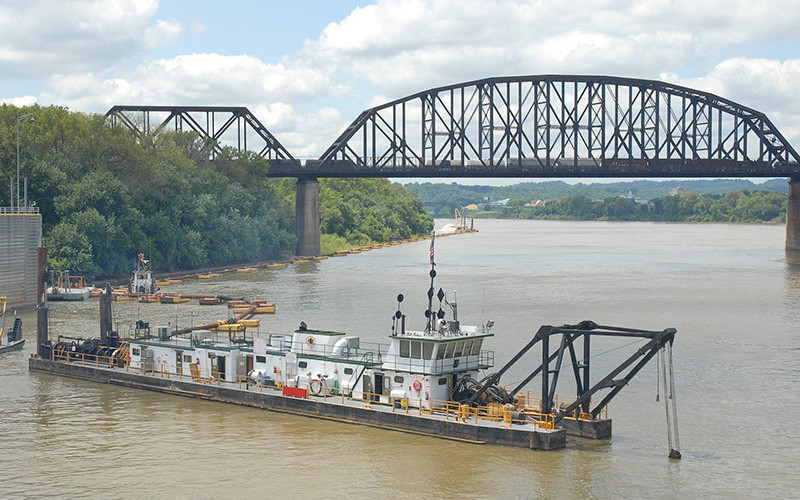As the grain shipping season this fall experienced a second consecutive year of low water levels that disrupted barge traffic on the inland system, the importance of river dredging again stepped into the spotlight.
Faced with deep-water declines on key navigational sections of the Mississippi and Ohio rivers, the Army Corps of Engineers has capitalized on what it learned from last year’s historic drought, communicating frequently with industry, adjusting allowable barge loads on low rivers and being more proactive. The Corps started important dredging work earlier on shallow hot spots that need more frequent attention to keep commerce moving on the waterways.
Last year, 40 days of critically low water was responsible for numerous barge groundings and stalled traffic at the height of the harvest season, driving up costs and freight rates. This year, 61% of the Midwest was deemed abnormally dry or in a drought as of late August, and most of the Mississippi River basin faced low water levels because of heat and no rainfall well into October.
The drought again occurred during the important grain harvest. About 60% of the nation’s grain exports — mostly corn and soybeans — move down the Mississippi, which must have at least nine feet of water for vessels to pass.
The Corps kept 17 dredges working 24/7 removing sediment and debris and contracted several private dredging companies to keep the channels at the required draft levels. The agency spends about $1.5 billion a year on dredging across the nation, and Congress continues to fund the program generously.
Meanwhile, a recent study by the U.S. dredging industry says construction of new Jones Act dredges totaled $2.5 billion in newbuilds and capital expenditures over the past five years.
Private dredges have been busy with 52 companies awarded federal dredging contracts in fiscal year 2022. Multiple companies bid on each project, evidence that the U.S. private sector dredging industry “is fiercely competitive and is delivering services that save the federal government and therefore the taxpayer hundreds of millions of dollars,” according to the Mike Hooks Report, an analysis of the fiscal 2022 federal dredging market that was released in September.
On the downside, dredging has made the Lower Mississippi River susceptible to the flow of salt water from the Gulf of Mexico into the river. The state of Louisiana declared a state of emergency because the intrusion was putting drinking water supply at risk.
The barge industry is used to the ups and downs of river flows. It’s part of doing business on the waterways. But industry reps say the shifts have become more extreme and that long-term droughts might be the new norm for river navigation going forward.




